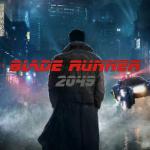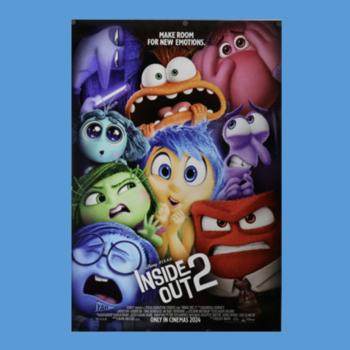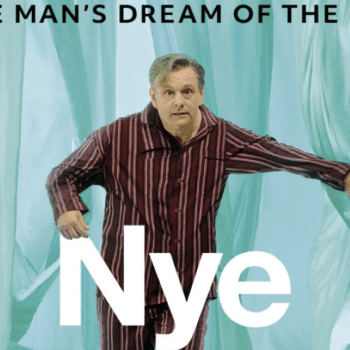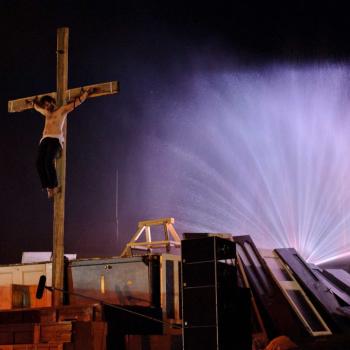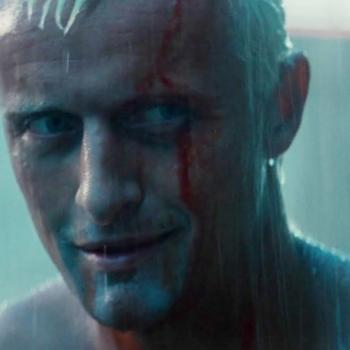Blade Runner 2049 is a cinematic masterpiece with superb visual effects, an absorbing storyline, fascinating characters, and poignant religious/philosophical themes.
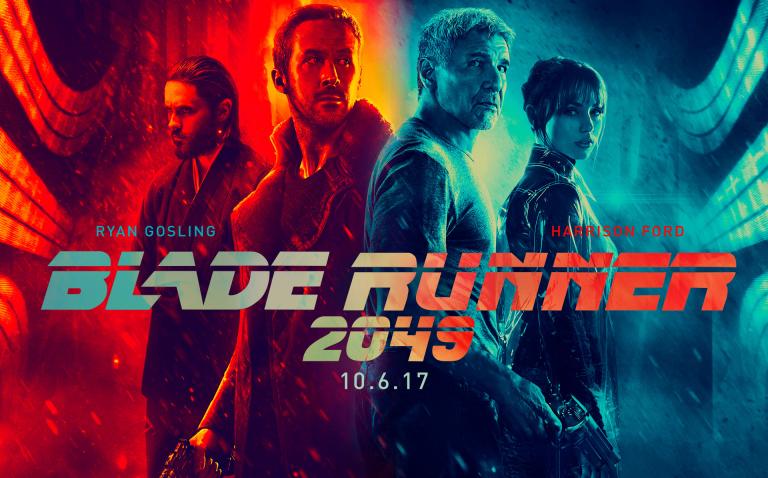
After fan-girling over Blade Runner for 35 years, I expected Blade Runner 2049 to fall short of its predecessor. I assumed there was no way the new film could come close to the grim beauty and existential poetry of Ridley Scott’s original dystopian vision. How could any actors even approach the chic of the original cast? Harrison Ford, the epitome of gritty coolness, and the rest of the actors are now virtually iconic. Not to mention the impossible task of matching Vangelis’ gorgeous synth-soundtrack that still exhilarates my chakras.
Expectations: Exceeded!
But Blade Runner 2049 is a brilliantly conceived, masterfully produced, and deeply satisfying continuation of the story. The film takes its time to layer the complex plot while inviting the eye to savor every high-concept frame. Ryan Gosling, as Officer K, achieves the Blade Runner cool with steely aplomb, while his fellow cast members inhabit a host of well-crafted characters. Plus, fans of the original will thrill to see both Edward James Olmos and Sean Young provide key plot points for the movie.
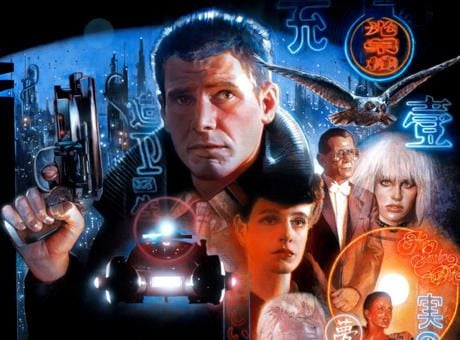
Harrison Ford? He’s still got it. Like a bottle of fine wine aged and carefully turned over the decades, his appearance is saved for something special. As an actor, his face registers every emotion, every memory with silent, simmering intensity. He is particularly effective at the movie’s end, in a scene that is simply virtuosic.
As for the soundtrack, with its churning, vibrating bass and soaring layers of synth-sound – it pays homage to Vangelis’ aural masterpiece while adding its own mystique. It also contains a key musical cameo from the original soundtrack that seals the deal for me on this film.
For fans new and old
My hunch is that even those who have never seen the original Blade Runner will find this a stunning movie. The story draws in neophytes to the Blade Runner world and creates a captivating stand-alone experience. If you enjoy sci-fi movies like The Matrix, Mad Max, and Tron: Legacy, then Blade Runner 2049 is for you. The visual effects are a wonder, the violence is shocking but artful (and never gratuitous), and the mood is both brooding and compelling.
For fans of the original movie, the director and producers obviously put a great deal of thought and effort into creating an experience that feels like Blade Runner. Flying cars swoop through driving rain across vast desiccated landscapes. Glowing umbrellas and oversized neon ads light the garish urban interior. And the imagistic and aural “quotes” that hearken back to the first film alternately transported me backward and forward. It’s a movie I will want to view and study just as much as the original.
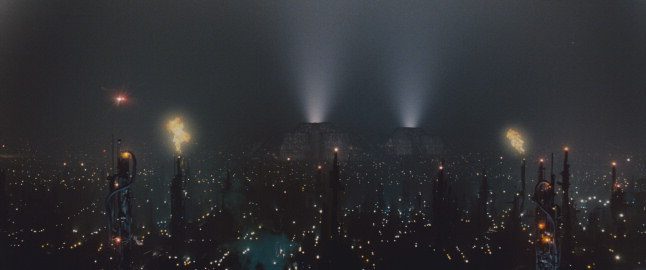
Asking the big questions
Blade Runner 2049, like the original movie, is not afraid to ask the big philosophical questions that make us wrestle with what it means to be human, and how far we should push the limits of technology and genetic engineering. The original movie is loosely based on Philip K. Dick’s science fiction novel, Do Androids Dream of Electric Sheep. It told the story of a policeman named Deckard (Ford) from the Blade Runner unit dispatched to “retire” (kill) rogue androids called Replicants.
[If you’re one of those fans intrigued by the perennial question of whether or not Deckard is himself a Replicant, Blade Runner 2049 resolves that mystery. You’ll want to go back and watch the original movie after having finished 2049, regardless of whether you’ve never seen it, or have viewed it multiple times.]
The new movie picks up the story thirty years later, where humans are once again feeling threatened by the next generation of Replicants.
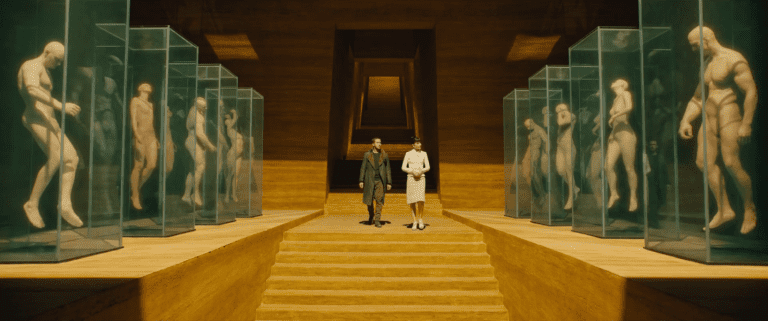
This time the Blade Runner unit is on the trail of a secret that threatens to undo the precarious balance between humans and Replicants. Part thriller and part mystery, Blade Runner 2049 sees each character wrestling with their own identity as they walk the knife edge of what is real and what is manufactured. All the while, they (and we) wonder what it means to truly love, and what we are willing to sacrifice for that love.
“Memories of Green” – Blade Runner 2049 as Cli-Fi (Climate Fiction)
The theme of memory weaves throughout both films – both in form and content – and creates a through-line that ties the two movies together. Fittingly, my favorite song from the first Blade Runner is a piece called “Memories of Green.” It captures the pathos of what has been lost in this futuristic world – the beauty of nature.
As I noted in my previous reflection on “Blade Runner and Climate Change,” the movie imagines a dismal world in which the effects of global warming eliminate nearly all animals, greenery, and basic human compassion. Climate fiction is a genre that can help folks understand climate change more effectively than charts and numbers. It’s the stories that help us imagine what lies ahead – and what is worth saving now.
One tree
2049 takes us further into that world where the only real tree that exists is dead, kept upright through stakes and ropes. Las Vegas is a red-tinted ghost town recovering from toxic levels of radiation. And San Diego is nothing more than a massive dumping ground for the metallic refuse of Los Angeles, itself a forbidding panorama of concrete and eerie lights.
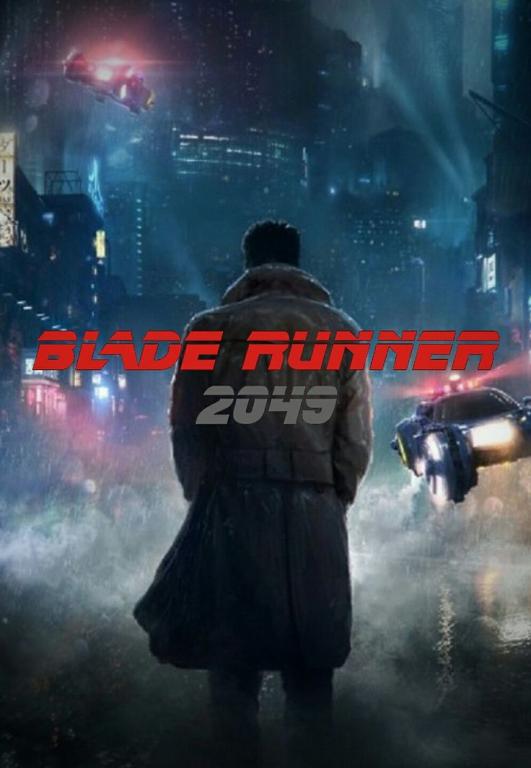
It is within the techno-graveyard of San Francisco that we see rows and rows of bald children disassembling electronic equipment to reuse the metal innards. But this is not just science fiction. This happens today in countries where children’s tiny fingers are put to work recycling our old cell phones and computers. In the process, they are exposed to lethal metals and toxins that wreak havoc on their young bodies. Like the machines they pry open with their delicate hands, the children are disposable – both in reality and in the film.
“Every civilization was built on the back of a disposable workforce.”
Children are not the only dispensable ones. As I argued in “Watching ‘Blade Runner’ in the Age of Black Lives Matter,” the first movie contained an implicit critique of the still-embedded slave-class structure of America. 2049 reiterates the slavery theme. Replicants, like people of color in American history, are the forced labor that enables humanity to survive and the wealthy class to thrive. (Though I must note that 2049 repeats the mistake of having white actors in the major roles, relegating people of color to supporting parts.)
But as with every slave saga from Egypt to America, the spirit of freedom cannot be chained forever. And no matter how strong, how high, or how wide we try to build our walls to keep out the “undesirables,” we soon discover the truth. We have actually been imprisoning ourselves. And the ones we feared turn out to have eyes looking back at us from the mirror.
The god’s-eye view
Not only does the movie give us a god’s-eye view of the future of the planet, it also incorporates religious imagery and biblical references that got my attention as a theologian. Angels, miraculous births, and baptismal waters are all referenced in Blade Runner 2049. And the character of Wallace – the creative genius behind the next generation of Replicants – is supremely malevolent in his hubristic god-like power. He kills and makes alive, while planning to “storm Eden and retake her.” But we’ve already seen what happens when humans overtake Eden. The results are devastating, and fund nothing but an artificial world on the verge of collapse.
Is there hope?
A single bee answers that question. As we watch bee colonies collapsing today – canaries in our climate-crisis coal mine – I couldn’t help but note the irony of the bee on Officer K’s hand. He then discovers an entire thriving apiary in the desert. How is this possible? Bees need flowers. They need pollen, sunlight, greenery. Their presence means that somehow, somewhere, in this apparently god-forsaken world there is a resurgence of organic life . . . and hope.
Blade Runner 2049 does not show us the source of this fledgling life.
But we know it must exist, just as surely as the Replicants are rising to claim their humanity, their love, and their freedom. This hope in what is yet unseen is the reason for watching this film. When you go see it, keep this passage from Romans 8:18-25 in mind:
I consider that the sufferings of this present time are not worth comparing with the glory about to be revealed to us. 19For the creation waits with eager longing for the revealing of the children of God; 20for the creation was subjected to futility, not of its own will but by the will of the one who subjected it, in hope 21that the creation itself will be set free from its bondage to decay and will obtain the freedom of the glory of the children of God. 22We know that the whole creation has been groaning in labour pains until now; 23and not only the creation, but we ourselves, who have the first fruits of the Spirit, groan inwardly while we wait for adoption, the redemption of our bodies. 24For in hope we were saved. Now hope that is seen is not hope. For who hopes for what is seen? 25But if we hope for what we do not see, we wait for it with patience.
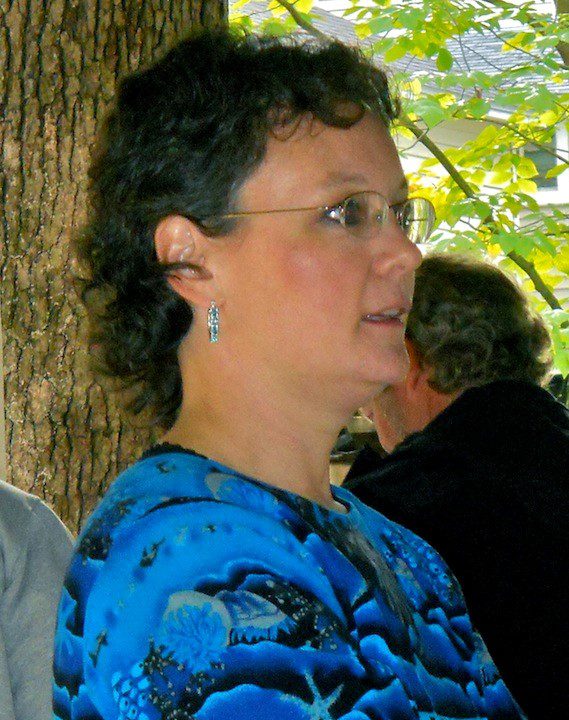
Leah D. Schade is the Assistant Professor of Preaching and Worship at Lexington Theological Seminary (Kentucky) and author of the book Creation-Crisis Preaching: Ecology, Theology, and the Pulpit (Chalice Press, 2015).
Twitter: @LeahSchade
Facebook: https://www.facebook.com/LeahDSchade/
Leah’s pieces on the original Blade Runner:


